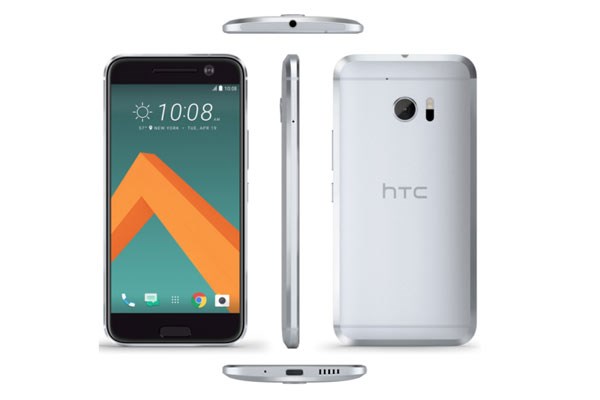
HTC has announced a smartphone with an “ultraselfie” front camera designed to reduce the risk of blurry shots. The lens module features optical image stabilisation (OIS) tech to counteract the effect of shaky hands – marking the first time the feature has appeared in a handset’s front camera.
The firm also says the HTC 10’s rear camera is ranked as one of the best.
But analysts are doubtful whether such features are enough to improve the Taiwanese company’s fortunes.
Five years ago, HTC was the world’s fourth bestselling smartphone maker with a market share of about 9%.
But in 2015, it fell to 17th place with a share of about 1%, according to research firm IDC.
HTC posted a 15.6bn Taiwanese dollar ($480.5m; £335.8m) loss in its last financial year, leaving it with cash reserves of just over double that sum.
It blamed its ill fortune on a lack of demand for its last top-end handset – the HTC One M9.
“To be very candid, our flagship did not perform well,” the firm’s chief financial officerChialin Chang told analysts in February.
“Actually I would say our flagships are falling far short of our expectations for the entire cycle of 2015.”
One company watcher said the new Android handset addressed complaints about the M9’s camera, display, battery life and ageing design – but said it might still struggle.
“HTC has righted all the wrongs with the last two generations of products and delivered the phone that it needed,” said Ben Wood from the consultancy CCS Insight.
“But it still has a mountain to climb to gain any traction despite the fact this looks like a beautiful device.
“That’s because there are many, many other manufacturers out there with stunning products too, and HTC can’t afford the marketing firepower to match rivals like Samsung and Huawei.”
Stabilised camera
HTC says that by adding OIS to both the 10’s cameras they should cope well in low light conditions since they can keep their shutters open for longer without risking blurred results.
“It’s a world’s first – optical image stabilisation in the front-facing camera,” explained its executive Graham Wheeler.
“It was incredibly difficult to do because OIS is quite a large module with magnets in it – and we had to have two near to each other.
Both front and rear cameras have a relatively wide aperture of f1.8 – meaning they let in more light than the previous generation – but differ in resolution.
The front is five megapixels and the rear 12MP.
Photos can be captured in the RAW format – allowing more flexibility in photo editing software than Jpgs – and a laser-based focusing system on the back is said to be fast enough to work in photo-burst mode.
HTC’s marketing materials point out that 10’s rear camera ties with the Samsung Galaxy S7 Edge’s as the best of their kind in tests by DxOMark – a highly regarded image research firm.
Other features of the new phone include:
- A 5.2in (13.2cm) display with 564 pixels per inch, which is said to be 30% more colourful and 50% more responsive to touch than its predecessor
- The ability to record and play 24-bit audio. A pair of “hi-res” certified earphones are included in the box
- A 3,000 mAh battery that can be charged to 50% in 30 minutes
- Compatibility with Apple’s Airplay protocol, meaning it can stream video and audio to Apple TV set-top boxes
It will cost £569 when it goes on sale later this month.
That is £20 less than the M9’s launch price and matches the cost of Samsung’s Galaxy S7.
Virtual reality
One analyst who was given an early look at the handset said he found little to be excited about.
“It has a good display, but it’s not the best,” said Stuart Robinson from Strategy Analytics.
“The DxO mark is good, but it’s the same as the S7 Edge – and does that make it the best? Normally, I would recommend people look at several benchmarks rather than just one.
“Selfies are very popular, so putting optical image stabilisation in the front camera does matter.
“But if HTC really wanted to push the message about its front-facing camera hard it should have used the same one as that in the rear – the reason it hasn’t done so is to keep costs down.”
HTC recently launched the Vive – a virtual reality headset that offers more features than its competitors and is more expensive as a consequence.
But unlike LG and Samsung, it has chosen not to sell add-on VR kit for the HTC 10, although the phone is compatible with Google Cardboard cases.
Mr Wood said this was not surprising.
“It’s a conscious decision as HTC feels Vive is at a completely different level from its virtual reality competitors and doesn’t want to dilute that message by offering a mediocre VR smartphone experience,” he said.
“But it’s not out of the question that it will do something with mobile VR when it thinks it’s the right time.”
